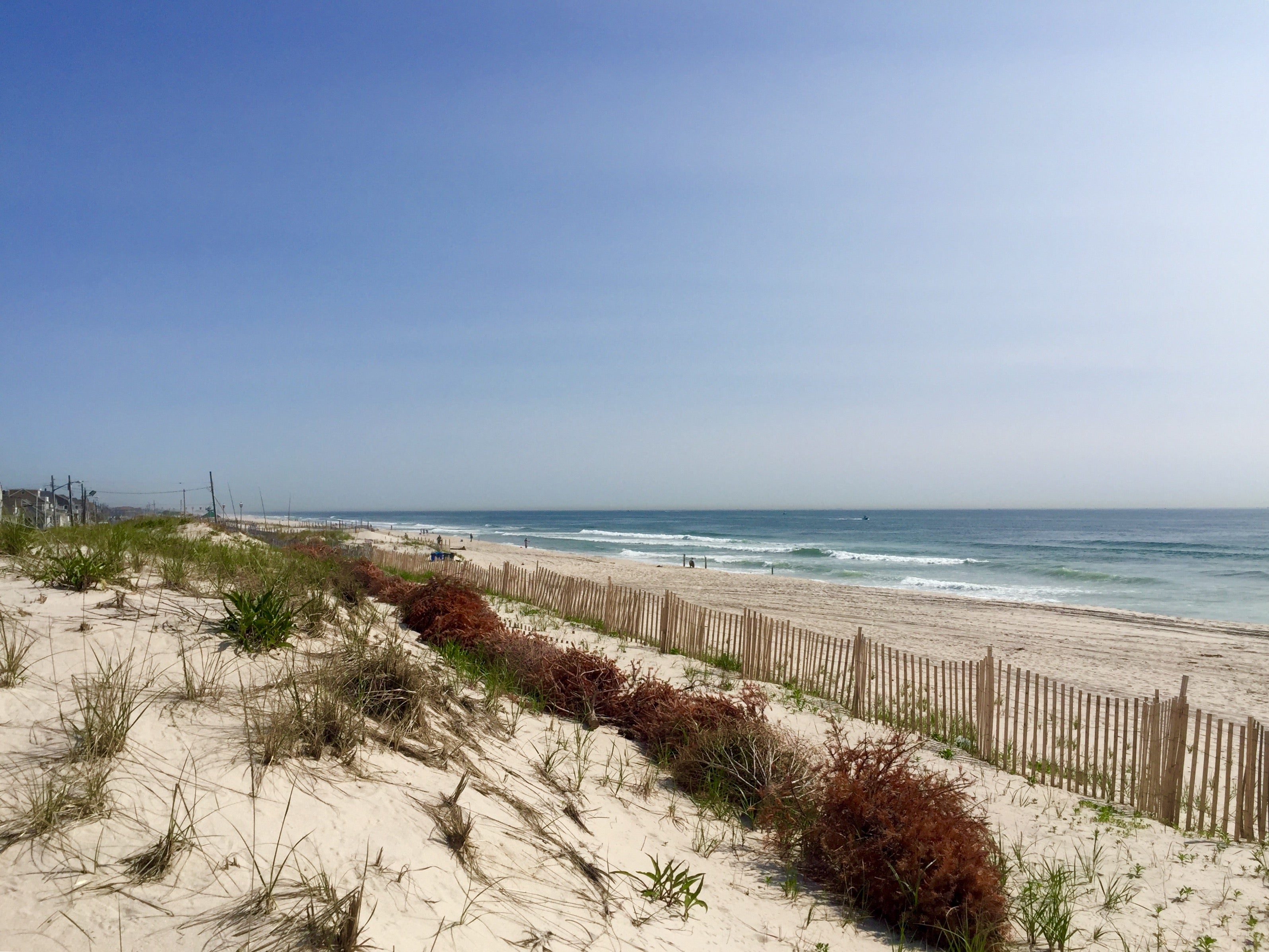Communities with beach replenishment made it through winter ‘in much better shape,’ expert says

South Seaside Park on Friday
After a relatively normal winter storm season with a few outlier events, communities with large federal beach replenishment projects made it through the stormy months “in much better shape,” a coastal engineering expert said.
As Memorial Day weekend looms, Stevens Institute of Technology research assistant professor Dr. Jon Miller says although the winter season was “pretty typical,” the remnants of Joaquin in early October and Jonas in late January caused “significant erosion,” especially on beaches that had not been nourished after Superstorm Sandy.
“When Joaquin stalled, it spared us a direct hit from a very large storm — a good thing — but as it sat offshore, it pumped waves at us for the better part of a week,” he said in an email. “The cumulative result of all those waves was beach erosion that was actually worse than Sandy in some parts of the state.”
But a notable exception was Midway Beach in South Seaside Park, where a decades-long, all volunteer dune building effort allowed the dune system to grow taller and wider during Joaquin.
[RELATED: Protective dune system grew taller and wider in an Ocean County private community during storm]
The coastal expert says Joaquin, which occurred early in the season, left many communities vulnerable, forcing some to do emergency repairs to prepare for the next storm.
Then Jonas hit, which was stronger than Joaquin but didn’t linger as long, generating significant storm surge and wave heights in some areas, particularly in the southern shore.
[RELATED: Floodwaters inundate Shore towns, causing damage some say rivals Sandy]
“In some communities in the southern part of the state the flooding was worse with Jonas than it was during Sandy. Add in the extreme cold, snow and slush, and it was a real mess,” Miller said.
By February, beaches that had already been compromised faced an ongoing threat when smaller storms — which typically wouldn’t generate much concern — passed through, the professor said.
[RELATED: Approximately 300 truckloads of sand delivered to Ortley Beach, officials say]
During the spring transition period, the weather pattern has alternated between mild erosional events and beach building conditions, according to Miller.
“It is likely that much of the sand eroded during the winter currently stored in sandbars will eventually migrate back onshore,” he said. “Due to the power of the storms, the bars are generally larger and located further offshore than normal. Therefore, it may take a little longer for the beaches to build back.”
Miller says that as the sandbars persist, the chances increase for rip currents, particularly early in the season.
Dominick Solazzo of Shifting Sands, an Ocean County coastal conservation group, says the seasonal southerly trade winds heading into the summer season “establish themselves, helping to provide a transport mechanism for sand lost during the winter storm season to move along the beaches.”
WHYY is your source for fact-based, in-depth journalism and information. As a nonprofit organization, we rely on financial support from readers like you. Please give today.

